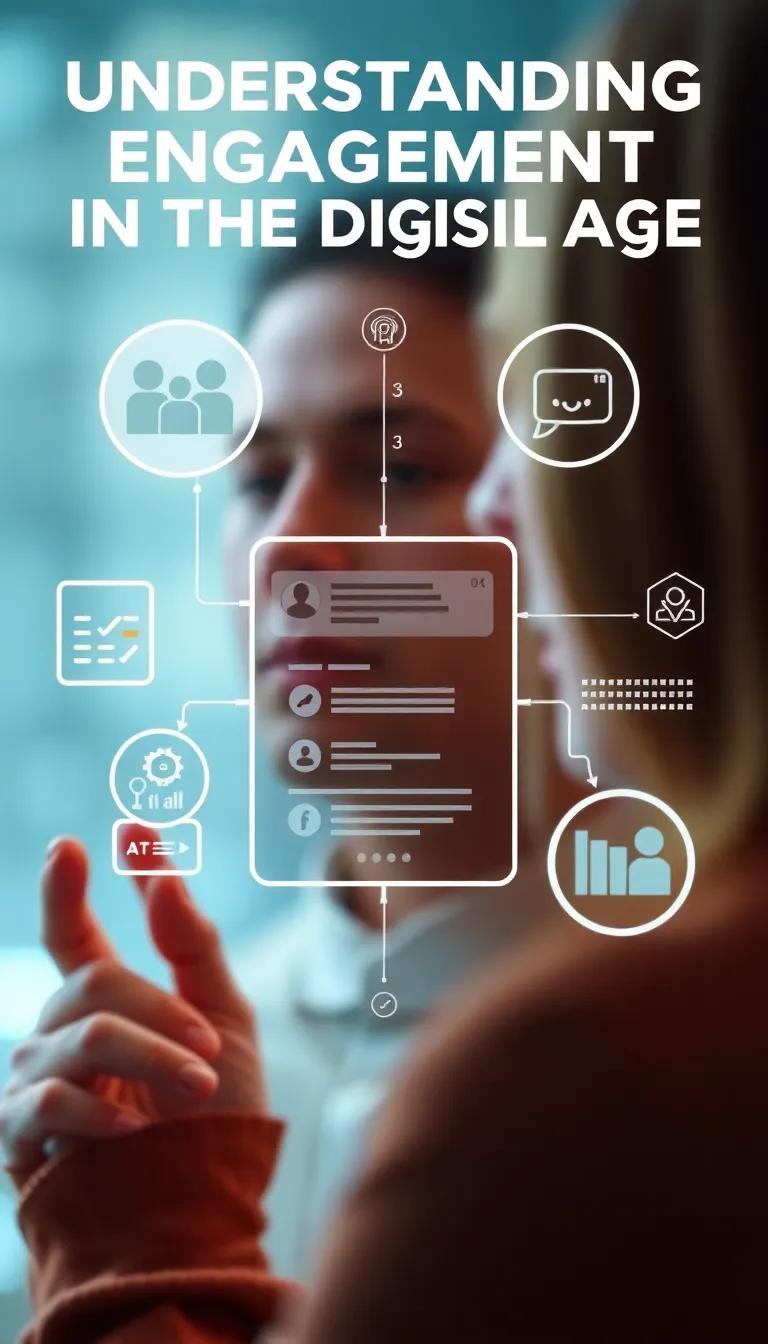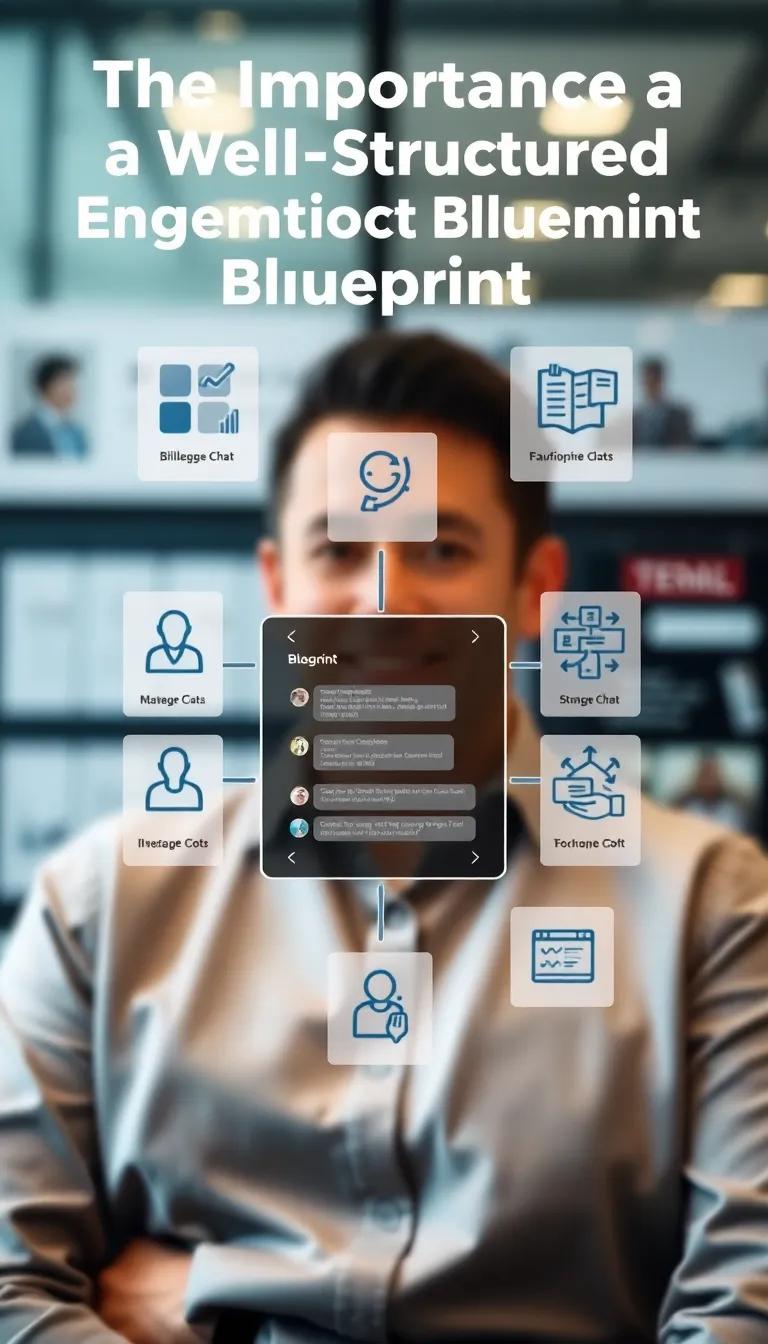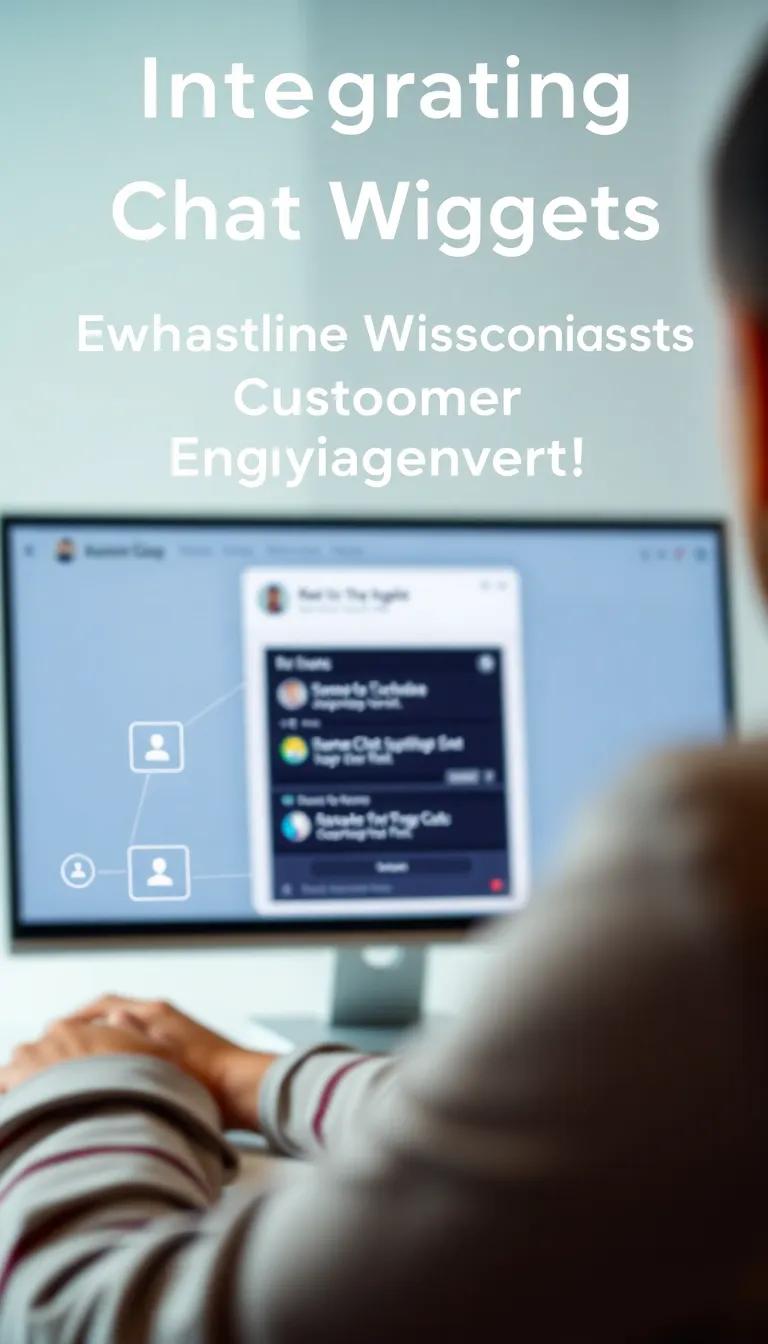Introduction
The Engagement Blueprint is an essential framework for businesses aiming to improve their communication and connection with customers through various online interactions. As brands navigate the complex landscape of digital engagement, incorporating tools like a free website chat widget can significantly enhance customer experience and drive loyalty. This article delves into the intricacies of utilizing an engagement blueprint alongside a chat widget to create meaningful customer relationships.
In today’s competitive marketplace, effective customer engagement is paramount for sustained growth. With many potential interfaces available, organizations often find themselves at a crossroads when deciding how to interact with their target audience. By employing a systematic engagement blueprint and integrating a meticulous website chat widget, businesses can foster greater connection with customers, leading to increased satisfaction and improved conversion rates. This article will outline critical strategies and insights on effectively merging these methods to unlock growth.
Understanding Engagement in the Digital Age
Defining Customer Engagement
Customer engagement refers to the emotional and psychological connection a customer has with a brand. It goes beyond mere transactions to encompass interactions across various touchpoints, creating a holistic experience that can foster loyalty and advocacy. In the context of digital marketing, this engagement manifests through interactions on websites, social media, emails, and customer service channels. Customers today expect not only personalized experiences but also seamless communication that allows them to connect with brands on their terms.
The Importance of Customer Engagement in Digital Marketing
In digital marketing, customer engagement plays a critical role in enhancing brand visibility and driving conversions. Engaged customers tend to spend more, share their experiences, and return for future purchases. Understanding the significance of engagement is pivotal; it acts as a barometer for customer satisfaction and a catalyst for brand loyalty. With numerous options available online, capturing the attention of potential customers becomes increasingly challenging. Here, engagement strategies are crucial as they allow brands to stand out, driving both initial interest and repeat interactions.
The dynamics of customer engagement in digital marketing differ considerably from traditional marketing approaches. While offline strategies often rely on face-to-face interactions or one-way messages through print media, digital platforms enable two-way communication. This shift allows for real-time feedback, adapting strategies based on customer responses, and fostering deeper relationships. Brands can now use data analytics to understand customer behavior better, segment audiences precisely, and tailor engagement techniques accordingly.
Interactive elements such as chat widgets on websites exemplify this transition. A well-placed chat widget can serve as a direct line of communication, providing immediate support and creating opportunities for personalized interactions. As customers engage with brands in a more instantaneous manner, the chances of conversion significantly increase. The incorporation of user experience insights into engagement strategies can also yield powerful results, turning casual visitors into long-term advocates.
Understanding the nuances of customer engagement in the digital realm is vital for brands seeking to remain relevant. By fostering meaningful interactions, businesses can establish stronger relationships with their audiences and harness engagement as a robust strategy for growth.
The Importance of a WellStructured Engagement Blueprint
Understanding the Components of an Engagement Blueprint
An engagement blueprint is a strategic framework designed to enhance customer interactions across various channels. When meticulously crafted, it consists of several key components that work synergistically to foster meaningful relationships with customers. These components include clearly defined goals, customer personas, communication strategies, and feedback mechanisms.
A well-defined set of goals aligns the engagement efforts with the overarching vision of the business. Customer personas help in identifying and segmenting the audience, ensuring that communications are tailored to meet specific needs and expectations. The communication strategy details how, when, and through which channels the business will interact with customers, allowing for a consistent and effective message. Lastly, feedback mechanisms, such as surveys and customer feedback loops, provide valuable insights that can be leveraged to refine the engagement strategy.
The Critical Role of Structure in Engagement
Having a structured approach to customer engagement is not merely a preference; it is a necessity for effective interaction in a highly competitive marketplace. Structure introduces a level of coherence that enhances customer experiences, minimizes confusion, and promotes a sense of trust. When customers feel that communication is organized and consistent, they are more likely to engage actively and positively with a brand.
A structured engagement blueprint enables businesses to track interactions and measure results methodically. By analyzing engagement data, companies can gain insights into what strategies resonate with their customers, allowing for continuous improvement. It facilitates the identification of successful engagement tactics and highlights areas that need adjustment, creating an agile framework that can adapt to evolving market conditions.
Without a structured engagement blueprint, businesses risk losing customers through fragmented communication efforts that fail to connect. Uncoordinated attempts at engagement can lead to mixed messages, customer frustration, and lost sales opportunities. A solid blueprint ensures that all team members are aligned in their approach, enhancing collaboration and efficiency across the organization.
In the context of integrating website chat widgets, a well-structured engagement blueprint serves as a foundational element. By implementing a chat widget that aligns with the goals and personas outlined in the blueprint, businesses can create tailored interactions that respond to customer needs in real time, thereby driving conversions and enhancing overall customer satisfaction.
Integrating Website Chat Widgets Enhancing Customer Engagement
Understanding the Significance of Chat Widgets
Website chat widgets serve as an essential tool for fostering deeper interactions with customers and significantly enhancing their online experience. These interactive features allow businesses to engage visitors in real-time, providing prompt responses to inquiries and helping to resolve issues. In a marketplace that thrives on customer loyalty and satisfaction, implementing chat widgets is no longer an added benefit but a necessity for improving customer engagement and driving conversions.
By offering immediate interaction, chat widgets create a seamless communication channel that reassures potential customers they are supported. This ranges from answering product questions, guiding users through the purchase process, to offering personalized recommendations. As consumers increasingly expect instant responses, chat widgets stand out by meeting these demands and adding a human touch to digital interactions.
Types of Chat Widgets Available
There are various types of chat widgets that businesses can choose from to integrate into their websites, each designed with specific functionalities that cater to different user needs:
- Live Chat: This real-time communication tool connects customers directly with a support agent, allowing for personalized service and quick problem resolution.
- Chatbots: Powered by artificial intelligence, chatbots can handle multiple conversations simultaneously and provide support at any hour, making them ideal for answering FAQs and guiding users through processes.
- Social Media Integration: These chat widgets allow customers to connect via their preferred social platforms, creating a more versatile communication channel that could enhance engagement.
- Mobile Chat Apps: Designed specifically for mobile devices, these chat widgets optimize the user experience, ensuring that customer support is accessible on-the-go.
- Feedback and Survey Widgets: Beyond basic interaction, these widgets can gather customer insights and feedback, enabling businesses to refine their services and improve the overall customer experience.
Understanding these types of chat widgets allows businesses to carefully select the most suitable options based on their engagement blueprint and the unique needs of their customer base. Proper integration draws on the framework outlined in a well-structured engagement blueprint, setting the stage for meaningful customer relationships and growth. The integration process of these tools can profoundly impact overall satisfaction levels, leading to enhanced loyalty and increased sales conversions.
Creating an Effective Chat Widget Strategy to Unlock Growth Through Customer Engagement
Steps to Develop an Engagement Strategy for Your Chat Widget
Incorporating a chat widget into your website is more than just adding an interactive feature; it is an opportunity to redefine how you engage with customers. Crafting a strategy centered around this tool can significantly boost customer interaction and conversions. Here are essential steps to formulating an effective chat widget strategy grounded in the engagement blueprint.
Establish clear objectives. Define what you want to achieve with the chat widget. This could range from improving response times to increasing lead generation through direct conversations. By having specific goals, you can tailor your interactions and measure success effectively.
Identify your audience. Understanding who your customers are will inform how you engage with them through the chat widget. Analyze demographic data, customer behaviors, and preferences to create tailored messages and define the level of assistance required based on various customer segments.
Once you’ve clarified your goals and understood your audience, it is vital to optimize the chat widget’s design and placement. A well-designed widget should be noticeable yet unobtrusive. Experiment with different positions on your web pages and design elements like color and size, ensuring that it complements the overall user experience while encouraging interaction.
Train your team or prepare an AI-driven response system to handle queries effectively. Ensure that your team is well-versed in the topics and products relevant to customer questions. Consider implementing pre-set answers for frequently asked questions to save time and enhance the customer experience. Continuous training and updates will contribute to smoother interactions.
Another key element is creating a clear escalation path. Not all queries can be resolved through automated messages or initial responses. Designate a method for escalating complex issues to human representatives promptly. This ensures customer satisfaction and reinforces trust in your brand.
Analyze feedback and adjust your strategy. Monitor customer interactions and gather data to assess the effectiveness of your chat widget. Use analytics to evaluate which strategies yield the best customer satisfaction and conversion rates, and make adjustments as necessary to optimize performance.
Measuring Engagement Success Evaluating Customer Interaction Through Chat Widgets
Assessing Engagement Metrics
Measuring the success of customer engagement strategies through chat widgets entails a thorough understanding of various metrics that can indicate effectiveness. Firstly, businesses should focus on response time as one of the primary indicators of customer satisfaction. This measures how quickly chat representatives engage with customers, impacting overall sentiment and conversion rates. A shorter response time typically correlates with higher customer satisfaction, making it an essential metric to track.
Another significant factor is customer satisfaction score (CSAT), gathered through post-interaction surveys. After a chat session, prompting users to rate their experience offers valuable insights into areas of strength and those requiring improvement. An average CSAT score could reveal how well the organization meets customer needs during interactions.
Incorporating customer retention rate as a metric can also provide insights into the effectiveness of engagement strategies. A higher retention rate signifies successful customer interactions leading to repeat business. This can be gauged through analytics tools that track customer return visits, showcasing how chat widgets contribute to long-term relationships.
Advanced Analytical Techniques
Adopting advanced analytical techniques can help identify patterns in customer behavior and enhance engagement strategies further. Implementing A/B testing on chat widget designs and functionalities allows businesses to measure user preferences effectively. By assessing which variations yield higher interaction rates and conversions, companies can continuously fine-tune their engagement approach.
Utilizing heat mapping tools can visualize where users are most engaged within the chat widget. It shows which features or prompts are drawing attention, allowing organizations to optimize placements and design elements that ensure higher engagement levels. This technique helps in understanding user behavior on a granular level.
Integrating chat widget analytics with overall website performance can lead to even more profound insights. By correlating metrics from chat interactions with overall website traffic and conversion rates, businesses can gain a holistic view of engagement’s impact on the bottom line. This comprehensive analysis supports informed decision-making that drives continual improvement.
Establishing an effective measurement framework for engagement allows organizations to adapt their chat strategies, maximize customer interaction, and drive higher conversion rates while fostering sustained growth through enhanced customer relationships. The next chapter will address common challenges businesses face in implementing these engagement strategies and provide solutions to overcome them.
Common Challenges and Solutions in Engagement Strategies
Addressing Barriers to Effective Engagement
Implementing an engagement blueprint via a free website chat widget can lead to significant growth for businesses. However, several challenges often impede this process. Understanding these hurdles and finding effective solutions is key to maximizing the benefits of customer interaction tools.
One common issue businesses face is limited resources. Many organizations do not have the budget to invest in high-tech engagement solutions or the manpower to manage them effectively. To counter this challenge, companies can leverage free tools that provide robust engagement features. This allows businesses to maintain high-quality customer service without incurring substantial costs. Additionally, focusing on training existing staff to utilize these tools effectively can help optimize resource allocation.
Another challenge is the integration of chat widgets with existing systems. Businesses may struggle to unify their chat tools with Customer Relationship Management (CRM) and other platforms. This can lead to fragmented customer data and inconsistent interactions. To resolve this, organizations should seek chat widgets that offer seamless integration capabilities. Utilizing solutions that support third-party API connections ensures that all customer interactions are synchronized and can be easily tracked.
Achieving customer engagement consistency can be daunting. Businesses may find customer responses to vary significantly, leading to inconsistency in engagement quality. Establishing clear guidelines for interactions can address this issue. Creating standardized scripts and response templates can help maintain the messaging tone and quality across various interactions. Regular training sessions can also keep the team updated on best practices.
Measuring the effectiveness of engagement strategies presents another challenge. Businesses may struggle to analyze data and derive actionable insights from chat interactions. To tackle this, implementing analytics tools that track customer behavior and engagement metrics can provide valuable feedback. Identifying patterns in customer interactions will enable businesses to refine their engagement strategies continually.
By recognizing these common challenges and implementing appropriate solutions, businesses can effectively leverage their engagement blueprint. A well-integrated chat widget enhances customer interaction, boosts satisfaction, and drives conversions, all essential components for unlocking growth.
Future Trends in Customer Engagement Evolving Chat Technology and Expectations
Anticipating Changes in Customer Interaction
As businesses strive to engage their customers effectively, the anticipation of future trends in customer engagement becomes crucial. A significant aspect to focus on is the evolution of chat technology, which plays a pivotal role in shaping customer experiences. The landscape is shifting towards the implementation of advanced chat solutions that go beyond traditional methodologies. For instance, AI-driven chatbots are expected to become increasingly sophisticated, capable of understanding and resolving customer queries with contextual intelligence. This transformation will elevate customer satisfaction levels, as users will enjoy more relevant and accurate assistance at any time and place.
The role of personalization in customer interactions cannot be overstated. As customers become more discerning, their expectations for tailored experiences will grow. Future chat technology will likely leverage robust data analytics to provide bespoke responses that resonate with individual customer preferences, thereby fostering a more significant emotional connection between businesses and users. This trend will necessitate a shift from generic interactions to personalized conversations, reinforcing the importance of a customized approach in building brand loyalty.
Integrating Multichannel Engagement
Another anticipated change involves the integration of multichannel engagement strategies. Customers will expect seamless transitions between various communication platforms, from website chat widgets to social media channels. The best chat solutions will not only streamline conversations within one platform but will also enable easy handoffs between channels, ensuring that customer histories and preferences are carried over fluidly. Such integration will reduce friction in interactions, thereby increasing customer satisfaction and potentially boosting conversion rates.
The incorporation of rich media elements in chats is set to gain traction. As technology progresses, chat widgets will evolve to include video, images, and interactive content, transforming textual exchanges into engaging multimedia experiences. This shift could significantly enhance customers’ understanding of products and services while providing an immersive engagement that resonates deeply with today’s visually-oriented audience.
As sustainability concerns continue to rise, businesses may adopt environmentally responsible practices within their customer engagement strategies. This can manifest in digital solutions that reduce paper waste and promote eco-friendly communication options, aligning with the ethical expectations of growing consumer demographics. Thus, brands will not only focus on selling their products but will also cultivate a socially conscious image as part of their engagement blueprint.
Conclusions
Implementing an Engagement Blueprint alongside a free website chat widget not only optimizes customer interactions but also significantly enhances brand loyalty. As we have explored throughout this article, the strategic alignment of these tools facilitates deeper connections with consumers, encouraging them to invest in a relationship with your brand. This investment leads to higher engagement levels and fosters a community of loyal advocates.
As businesses embrace the essentials of customer engagement, they must recognize that continuous improvement is vital for maintaining competitive advantage. By remaining adaptable and innovative in their strategies, organizations can leverage their engagement blueprint and chat widget to drive sustainable growth. Ultimately, building a robust engagement framework will instill trust and encourage ongoing conversations, securing a fruitful relationship with customers in the long term.




















